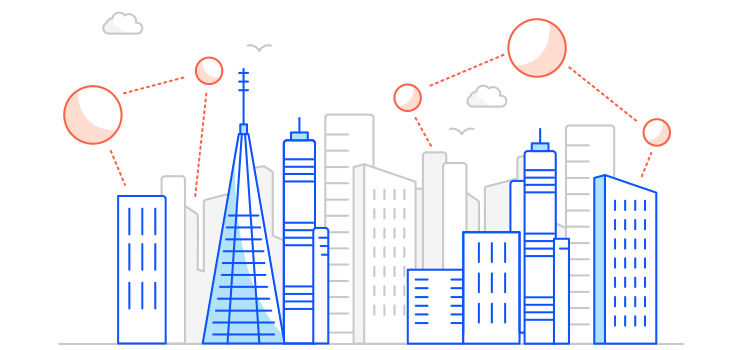3 ways SD-WAN can help make your network more secure

Highlights
- 1 in 3 Australian adults has been a victim of cybercrime – Australian Cyber Security Centre
- $29b p.a. is the estimated direct costs of cybersecurity incidents to Australian businesses
- 65% of Australian businesses were interrupted due to a breach (Telstra Security Report 2019)
I'm here today to advise you that, based on advice provided to me by our cyber experts, Australian organisations are currently being targeted by a sophisticated State-based cyber actor
Prime Minister Scott Morrison
June 2020
Even before COVID-19, cyber security was a large and growing area of risk that went to the very heart of the safety and security of the nation, of every family and business.
COVID-19 has amplified that risk because so many of us are now working and studying from home. This means activities we used to undertake within the traditional firewalls of enterprises, governments and education institutions are now being completed from home over VPNs.
Whilst we’ve previously talked about how SD-WAN could increase an organisation’s potential attack surface, it also has some important advantages to help improve your network security.
1. Update policies and controls much more quickly
Cyber security has always kept business and enterprise leaders up at night. Drawing attention to a series of attacks targeting Australian organisations, the government then advised all organisations to ensure that all their devices, websites and point-of-sale systems are immediately updated with the latest patches.

Businesses with SD-WAN solutions can respond faster to these kind of threats thanks to SD-WAN’s simplified network management.
In a typical private MPLS-based hub and spoke model, configuration and policy changes must be made on every device at each site. It can be a time-consuming and error-prone process.
SD-WAN devices on the other hand are managed from a single point of control and are come equipped with more smarts than a typical router. They can filter traffic flows based on application, application family, or application object match-types and then apply security rules to them.
As rules are managed and rolled out centrally, it is much easier for network managers to ensure that security policies are applied across all their sites consistently. This improved consistency helps to avoid potential security vulnerabilities caused by inconsistencies in traditional networks.
2. Enabling access while protecting core networks
Even in our COVID-affected world, most organisations will have a physical footprint where staff, customers or guests are on-site and seeking connectivity.
Consider a hospital or a retail centre: They will want to offer a great on-site experience with Wi-Fi access but not let patients or customers access their core networks. Likewise, organisations may not want staff to use their core network for non-critical internet-based tasks. This is where segmenting a network through virtual routing and forwarding come in.
In another example, a large supermarket chain could take advantage of SD-WAN’s segmentation capabilities by separating its point-of-sale applications and other core internal data from its direct internet access that provide free Wi-Fi to customers.
3. Integrated management for total network visibility
SD-WAN devices enable IT managers to see what’s happening on the network overlay (the virtual network created over the top of the underlying connectivity to enable the SD-WAN’s control and orchestration).
However, SD-WAN only provides a view into the overlay. IT teams can get a full picture of the network by monitoring the underlying WAN links as well and applying analytics to the data produced to identify any suspicious activity.
These security capabilities just scratch the surface of SD-WAN benefits.
Download the Telstra Ultimate SD-WAN Guide to get the full picture or find out more about Telstra SD-WAN here.
References


